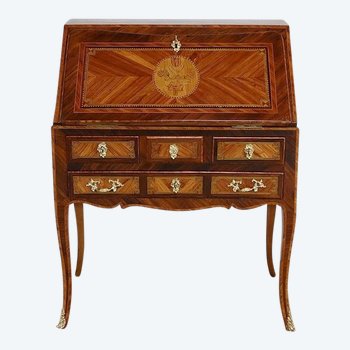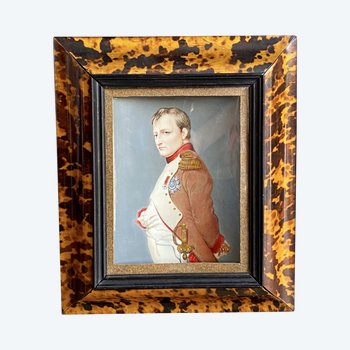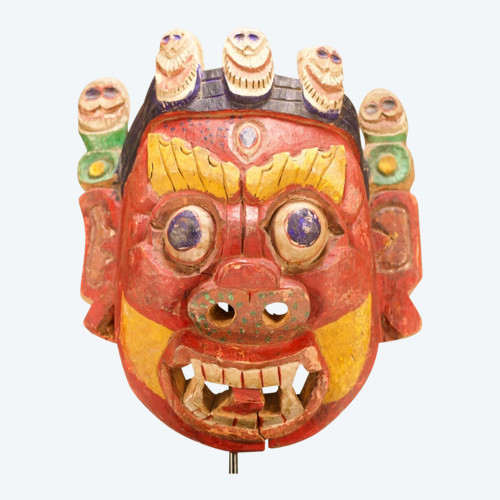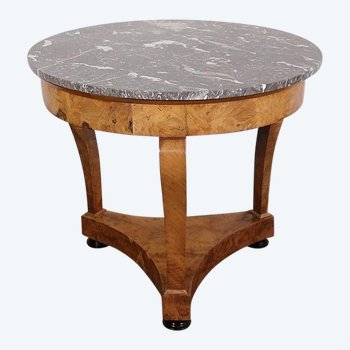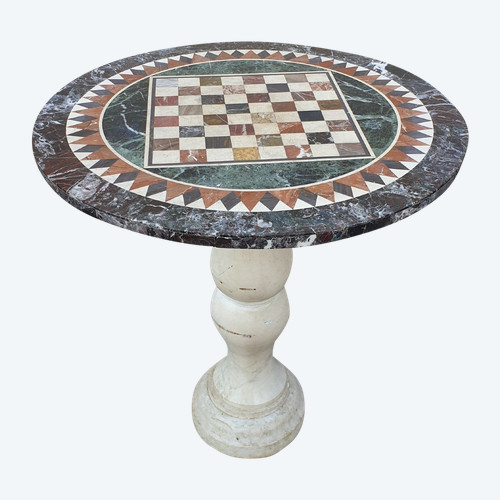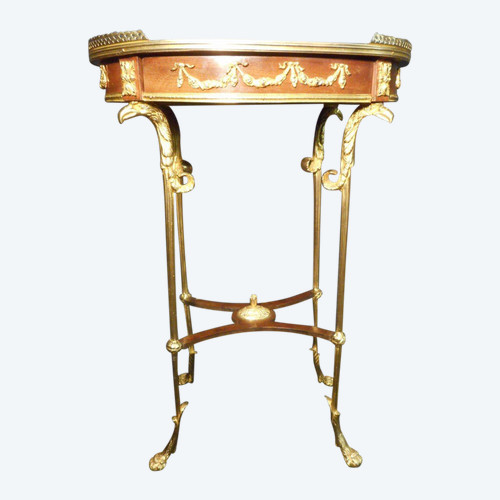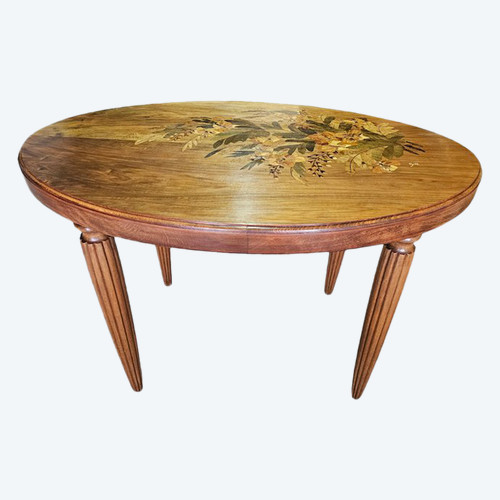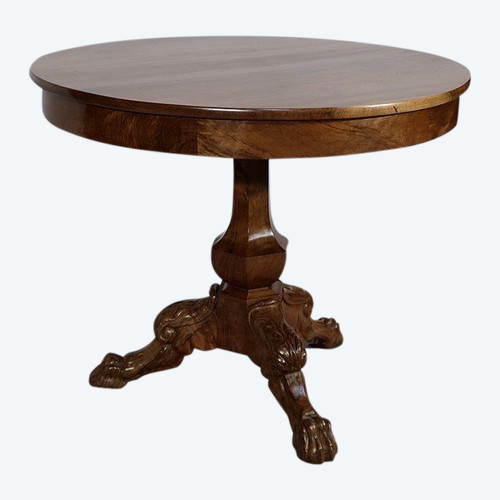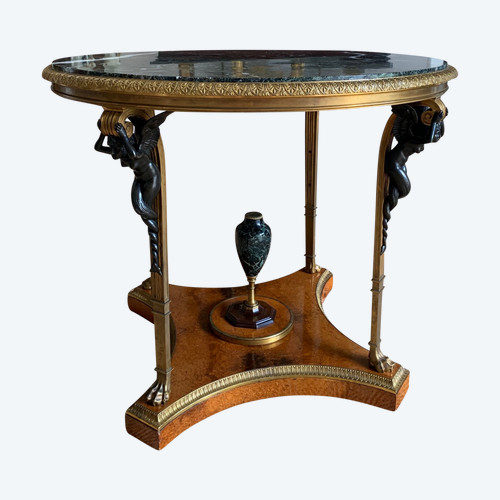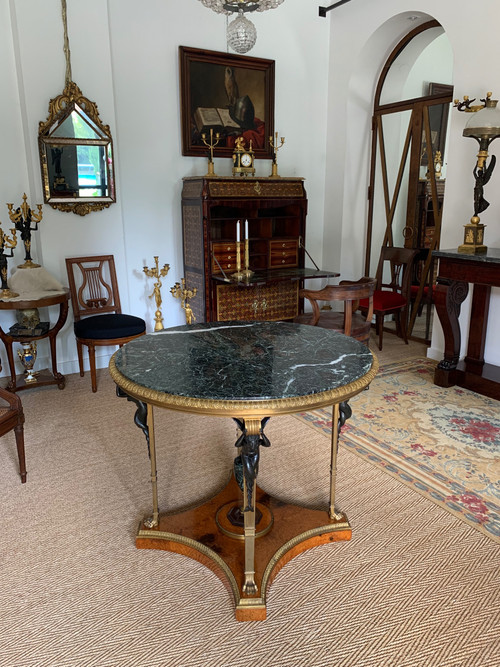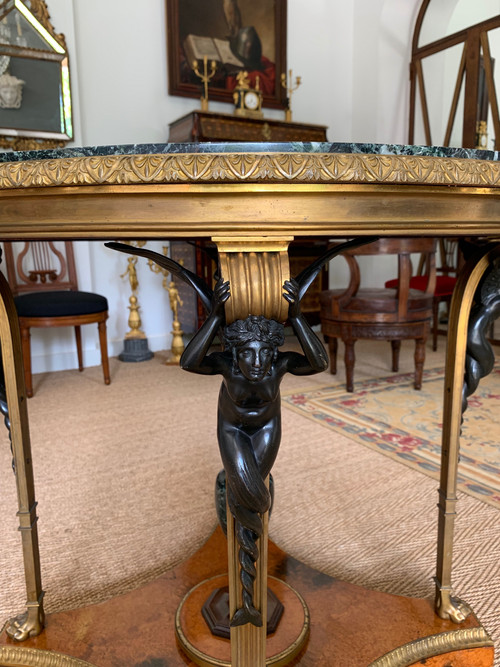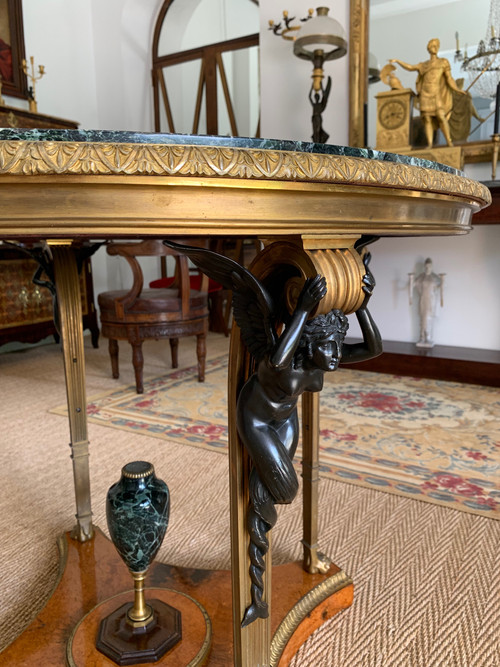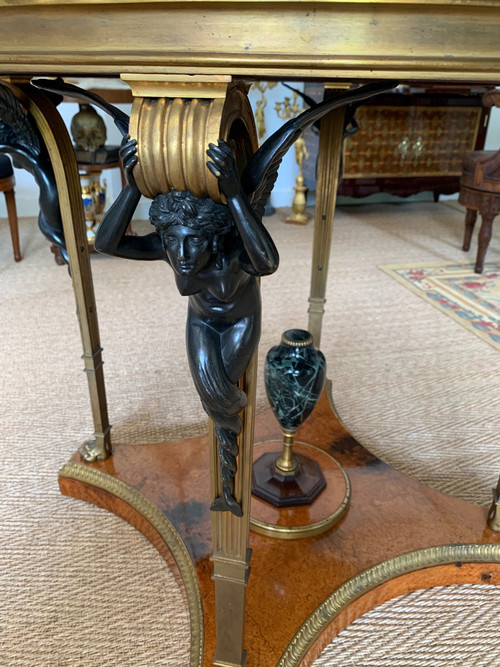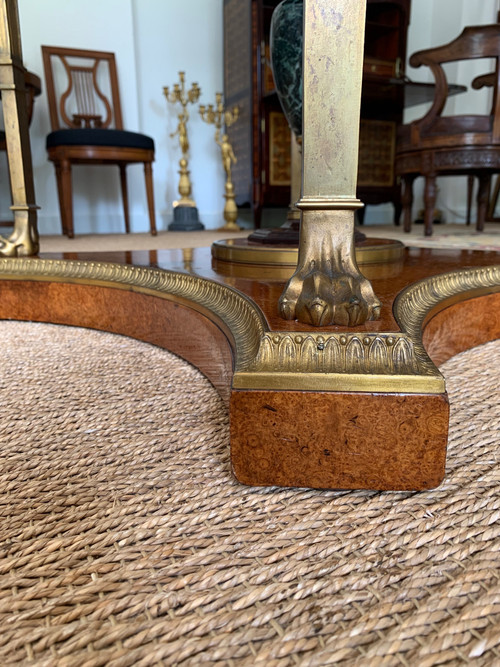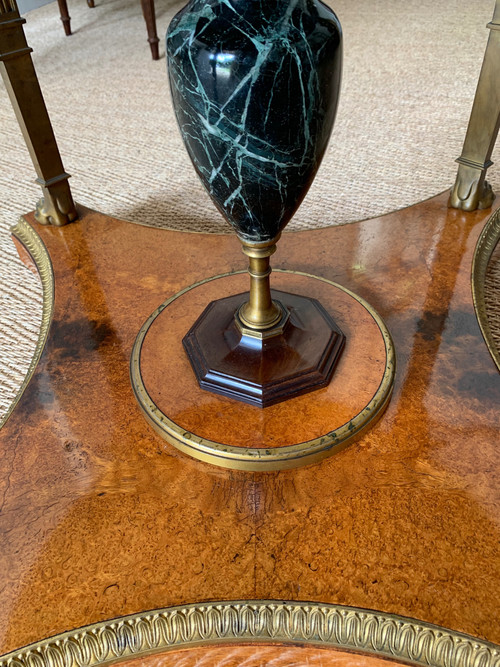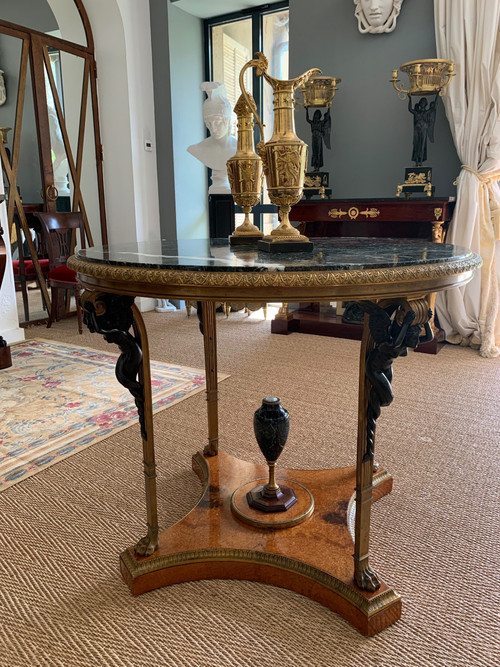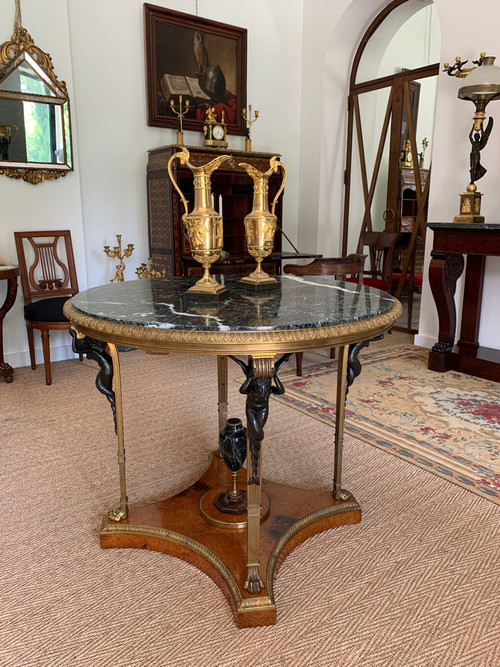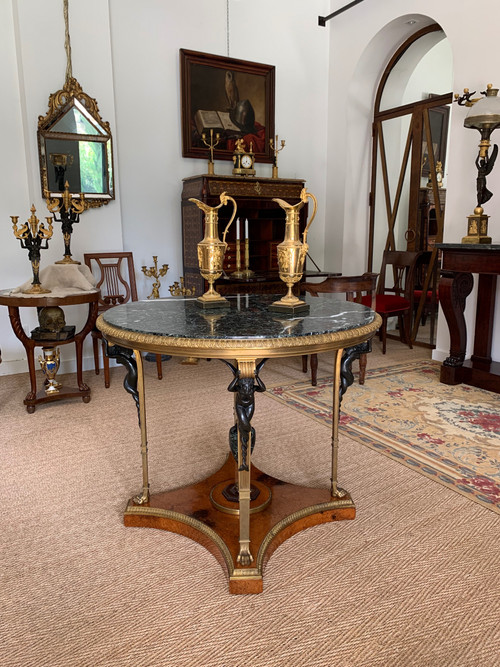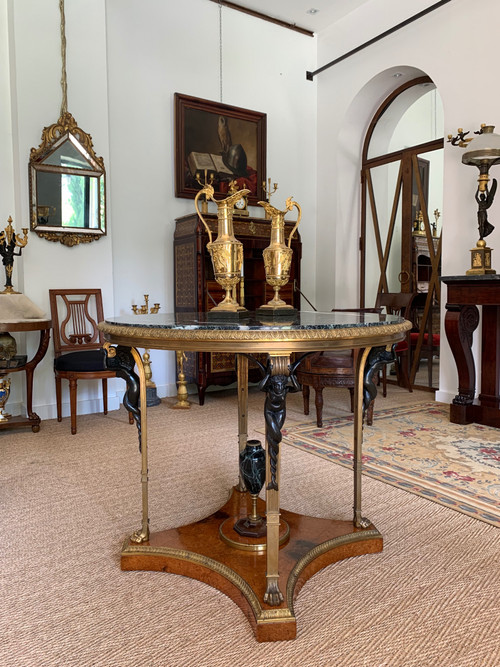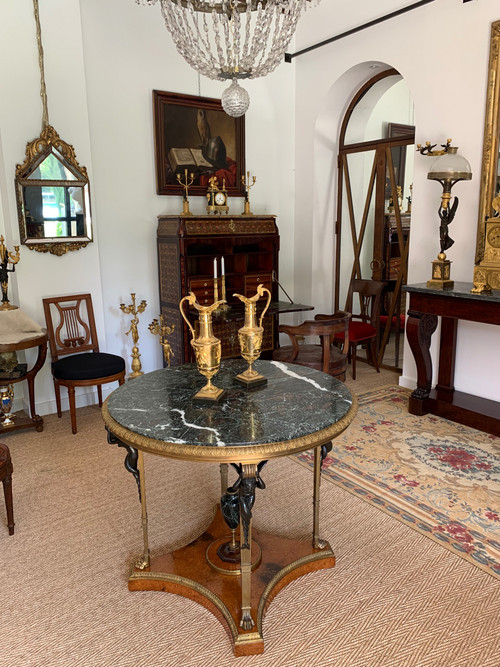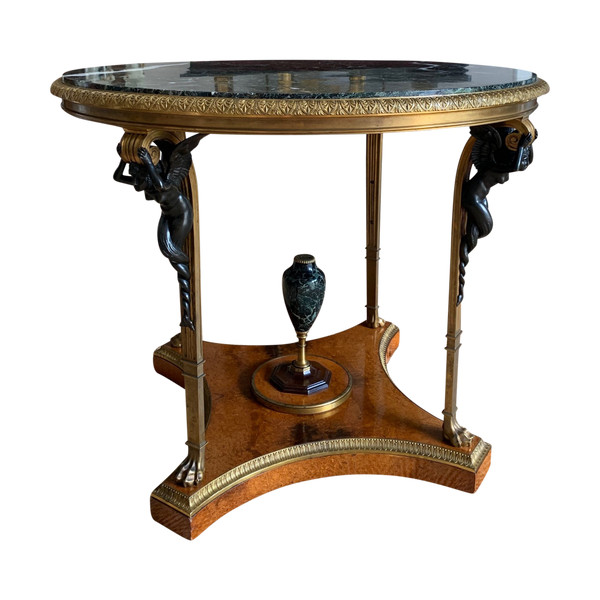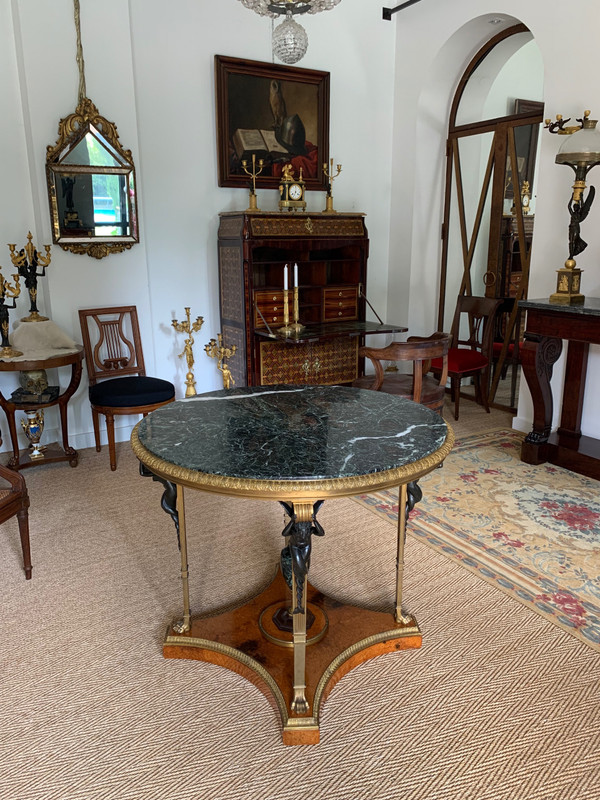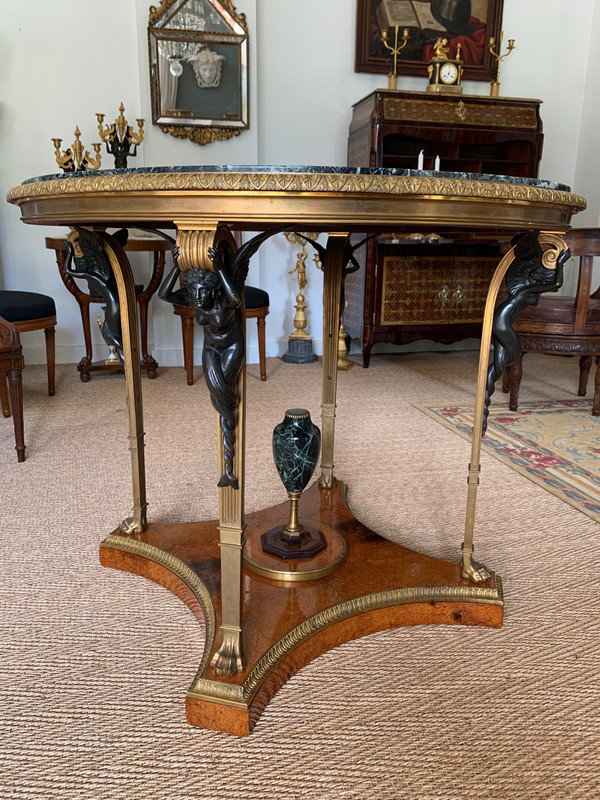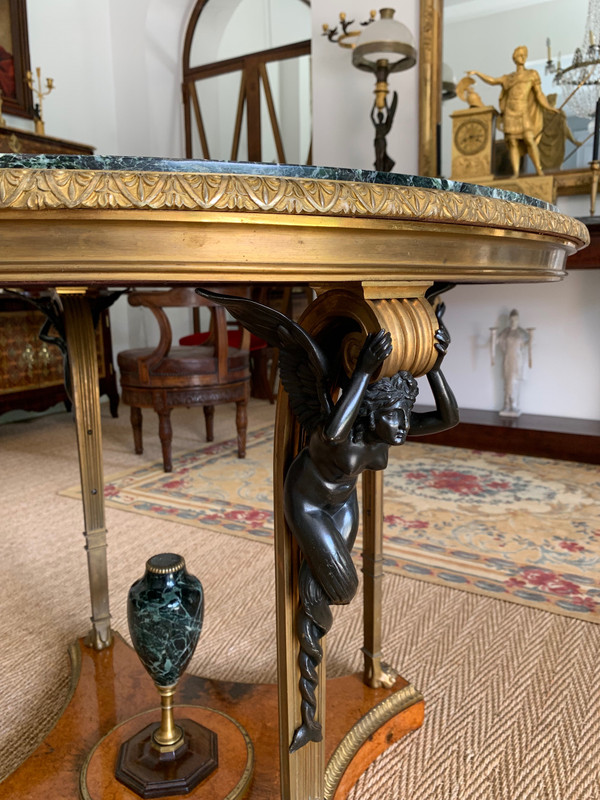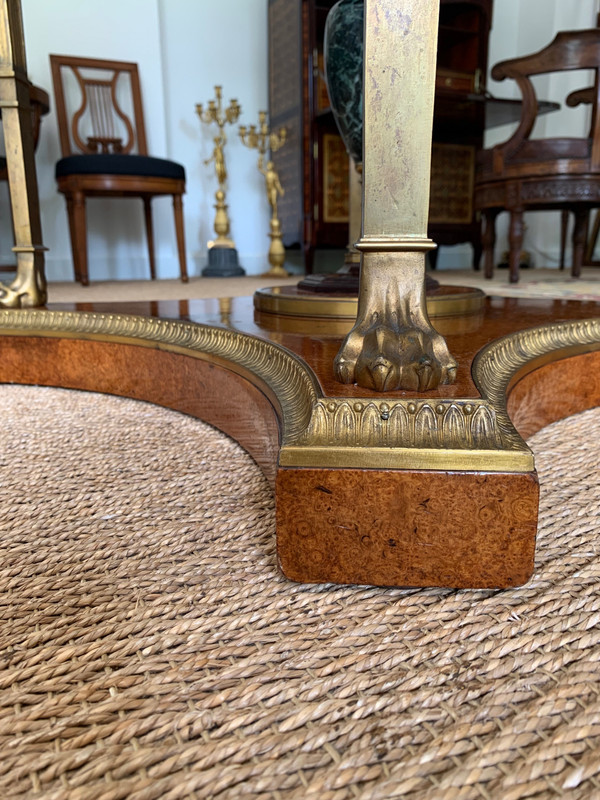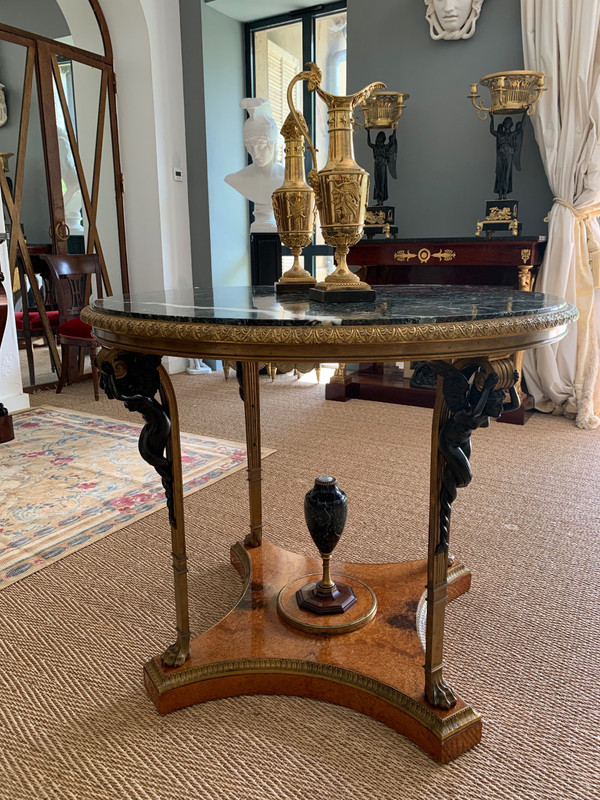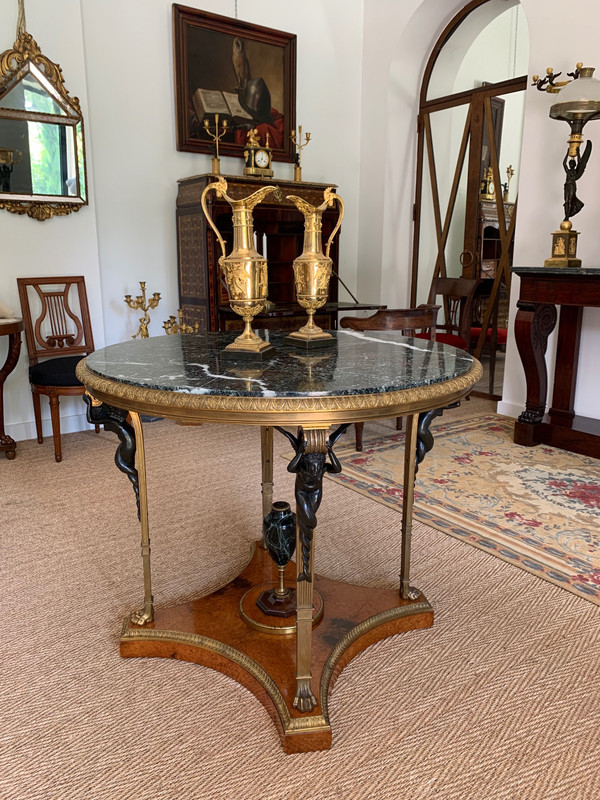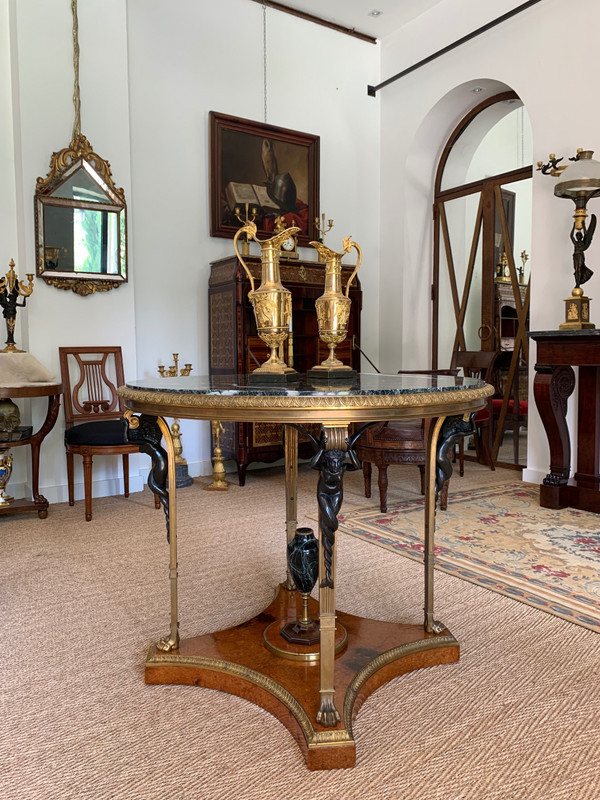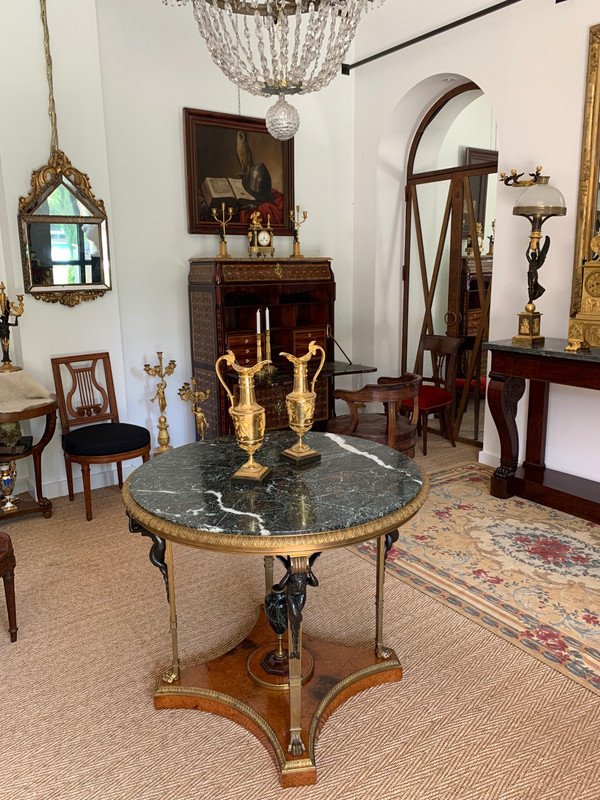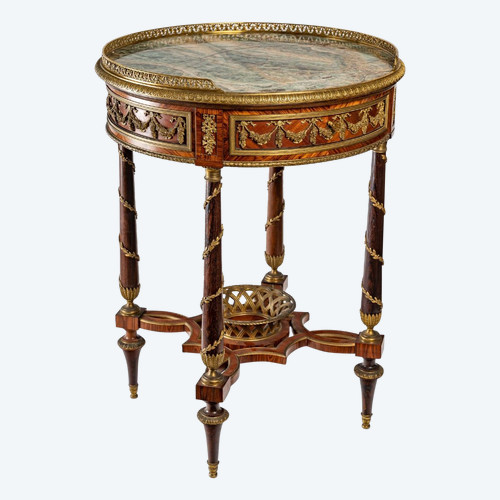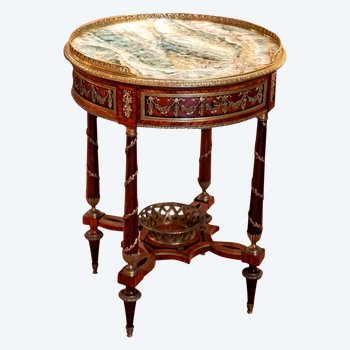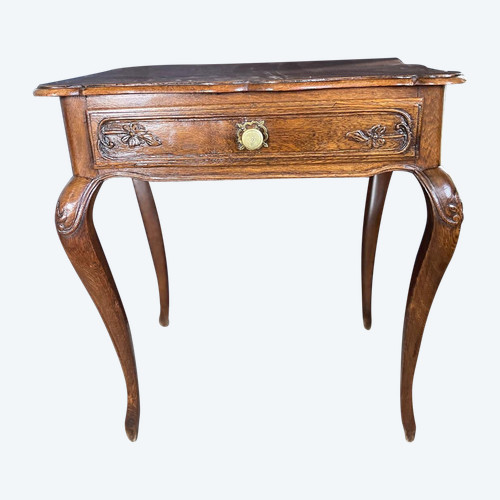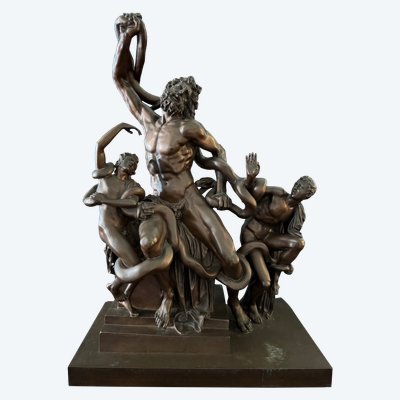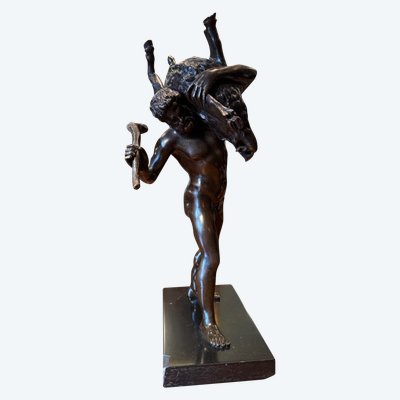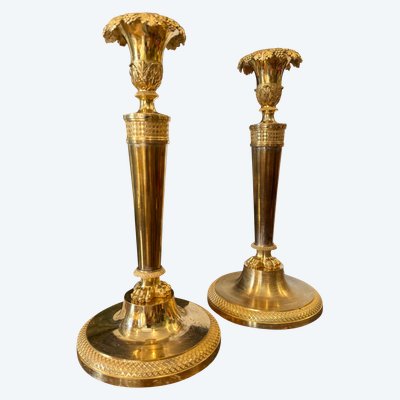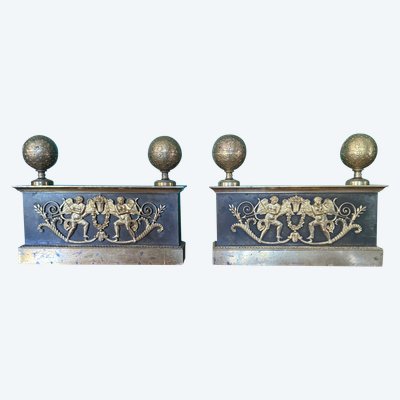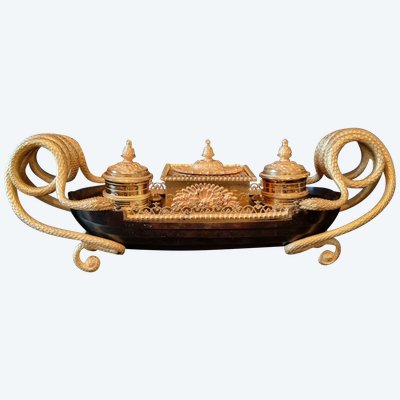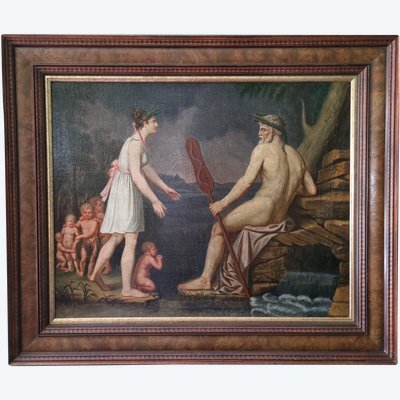This description has been translated and may not be completely accurate. Click here to see the original
A rare item for sale, this pedestal table is all the more so for its remarkable quality and craftsmanship.
It is an exact copy of the famous model designed by Adam Weisweiler and Pierre Philippe Thomire, housed in the Palais de Fontainebleau.
Studies and expert appraisals of the frame and the bonzes show that the example on offer dates from the early 19th century, under the Restoration, probably between 1820 and 1830, during the reign of Charles X.
(From the second half of the 19th century onwards, major manufacturers continued to produce this pedestal table: Maison Millet around 1860, then Linke from the end of the 19th century).
A gilded bronze moulding with palmettes and stylized acanthus leaves, underlined by a band, encircles the main top in antique green marble, 92 cm in diameter.
It features a finely chased bronze quadripod base adorned with winged mermaids. These support the wide ribbed scroll uprights resting on claw feet.
The solid base, in burr amboyna veneer, is highlighted by a gilded bronze frame with a frieze of palmettes.
In the center, on a stylized podium with gadrooned frieze, an ovoid vase in antique green marble rests on an octagonal pedestal.
Jean-Pierre Samoyault, former curator of the Musée National du Château de Fontainebleau, attributed the identical reference piece to Adam Weisweiler and Pierre Philippe Thomire at the end of the 18th century.
This magnificent piece was delivered by Rocheux for the Château de Fontainebleau. This dealer had certainly purchased it following the revolutionary sales. The piece of furniture appears in a memorandum dated August 23, 1810: "a guéridon of iff root or Amboine burl wood, the quarter round with ornamental leaves and palmettes supported by four bronze caryatids, some of the gilding on the mat and resting on a tray decorated with gilded bronzes on the mat and a vase in the middle. Size 3 feet in diameter by 2 feet 6 inches high, price 1900" (AN, O2 518, folder 3, item 30).
It is still preserved in Fontainebleau and illustrated in :
J-P. Samoyault, Fontainebleau, Musée national du château, Catalogue des collections de mobilier 3, Meubles entrés sous le Premier Empire, RMN, Paris, 2004, p.248
The winged mermaids that form part of the composition of the ormolu decoration are freely inspired by the designs of Parisian ornamentalists of the last quarter of the 18th century, particularly Jean-François Forty's drawing of an arm of light composed of a fish-tailed putto, illustrated in H. Ottomeyer and P. Pröschel, Vergoldete Bronzen, Band I, p.288, fig.4.16.2 and a sconce design by Jean-Demosthène Dugourc with a winged mermaid figure reproduced in H. Ottomeyer and P. Pröschel, op.cit. p.289, fig.4.16.6.
Pierre-Philippe Thomire used this decorative element, either identically or with variations, in some of his creations.
Similar fantastical marine animals appear on a series of tripod-shaped candelabras attributed to Thomire and studied by Gervase Jackson-Stops in the exhibition catalog The Treasure Houses of Britain, Washington, National Gallery of Art, 1985-1986, notice 491; several pairs are known, including two in the Mobilier national (bought from Thomire by the Imperial Furniture in 1812), one in the Musée de la Malmaison and one in the Queen's dining room at Ludwigsburg Castle. Identical figures also adorn a pair of large tripod Athenians, now transformed into a perfume burner, sold at Christie's, London, June 12, 2003, lot 1044; as well as a pair of patinated and gilded bronze sconces sold at Sotheby's, New York, May 16, 1987, lot 55.
Finally, winged mermaid figures of a slightly different design decorate, on the one hand, the famous "American Independence" candelabrum, originally intended to be placed on a commode by Riesener in Louis XVI's inner cabinet at Versailles, now in the Musée du Louvre (illustrated in P. Verlet, Les bronzes dorés français du XVIIIe siècle, Paris, 1999, p.46, fig.40), which the author likens to Thomire's work; as well as a pair of vases in white marble and patinated and gilded bronze directly inspired by a watercolor attributed to Thomire's workshop and now in the Musée des Arts décoratifs in Paris (reproduced in H. Ottomeyer and P. Pröschel, op.cit., p.298, fig.4.18.6).
Very good condition, original gilding.
As I don't put all my Furniture and Works of Art on Antikeo, I invite you to follow my Instagram account where you can enjoy all the news: @monantiquaire.
Ref: 28ZK8QZAV8

